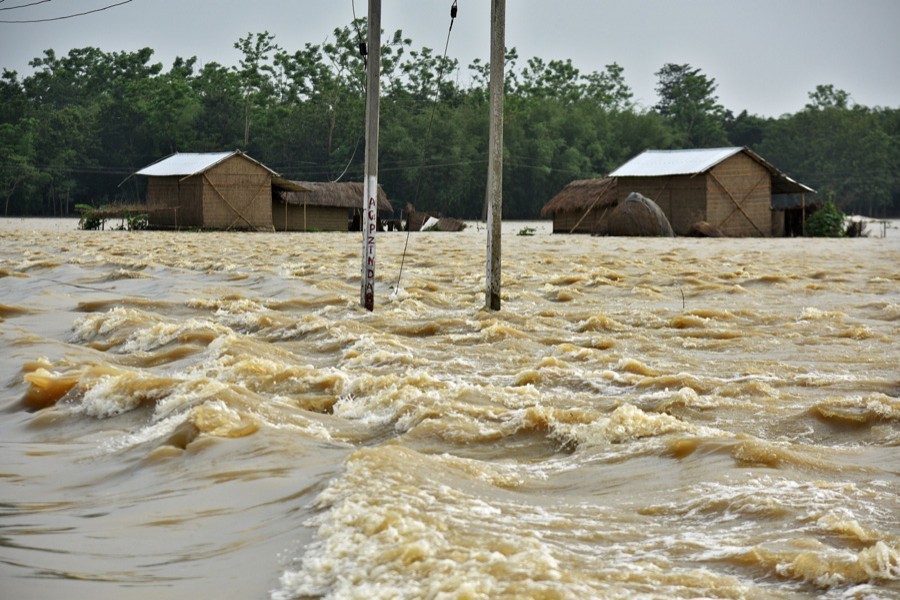
Published :
Updated :

In spate, the rivers Teesta and Dharla have inundated large areas in the country's north. Thousands have been left marooned and many of the affected had to leave their houses for shelter on highlands. Now comes the news that the Jamuna, Brhmaputra are also swelling dangerously. All 10 rivers of the country's north-eastern part are likely to flow far above the danger mark. The rise in water level has been precipitated by incessant rain upstream. According to the Flood Forecasting and Warning Centre (FFWC) of the Bangladesh Water Development Board (BWDB), a light pressure has formed in the north-western part of the Bay of Bengal allowing the extension of the monsoon axis from the Punjab in the west to Assam in the East. Both Bangladesh and West Bengal are under its spell. So far the FFWC predicts worse days for nine districts in the northern and central regions of Bangladesh.
Now the important thing is to know if floods will stalk extensively. Common sense tells it will depend on the low in the Bay of Bengal that causes rainfalls in this part of the world. If there are torrential rains under its influence and it continues longer, chances are that more areas in the country's centre and south will get inundated. That will be a most undesirable development for inhabitants of the affected areas because the threat of Covid-19 still hangs like the sword of Damocles over their head. At a time people in their secure homes feel insecure on account of the Delta variant of the disease, shelterless people looking for dry lands to erect a temporary shelter have to forego many of the health protocols against their will. To make their case further worse, both government and voluntary aid and assistance are hard to come by as yet.
Those who have been forced to live in their makeshift shelters on roads, embankments, bridges and any other high grounds have complained of a lack of help. Sure enough, people of this land are known for great resilience but there is a limit to their forbearance. The market is volatile and village people can fend for themselves if only they are not displaced from their ancestral homes. Now exposed to the elements of Nature -- not to exclude mosquitoes, insects and even snakes -- these people must be given foods and other relief materials for their survival until the flood water recedes and they resume their normal life.
Again, the worst sufferers are those whose homesteads have been devoured by widespread river erosion. Reports have it that river erosion has not only destroyed dwelling houses, at least eight primary schools in Kurigram were overtaken by the rivers. Moveable property of some of these schools could be saved but there is no place to set up the school houses in some villages. That children and women suffer more than others on account of natural disasters is proved here once again. If schools reopen, students of these schools will have nowhere to attend classes. Similarly, women's sanitary health suffers in such temporary shelters. Aid agencies and local government should take care of all such issues in preparing aid packages for the flood-affected people.


 For all latest news, follow The Financial Express Google News channel.
For all latest news, follow The Financial Express Google News channel.